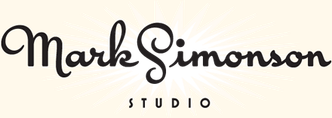Type selection is key
Typography sets the tone before you say a word. It shapes how your message comes across — how it feels, how it’s read, and how it’s remembered.
We notice type most when it’s wrong. When something feels off. The spacing’s tight, the voice is too loud, or it just doesn’t match what’s being said. But when the type is right, it gets out of the way — and helps the words do their job. It can give structure to ideas. It makes space for meaning. Typography isn’t just about style. It’s about the way we take in information. It adds rhythm to the reading experience. It tells us where to look first and what matters most. It makes content easier to follow, and in some cases, easier to trust. The tone comes through in the details — the shape of the letters, how they’re spaced, the way one form leads to the next. Some typefaces feel quiet and careful. Others have energy. Some pull you in. Some stay out of the way. Choosing the right one is less about picking a look and more about finding a voice that fits what you want to say.That’s why trying type in context matters. It’s one thing to see a beautiful letter or a well-set specimen — but it’s another thing to see how it handles your content. How it behaves when it’s small. How it reads when it’s big. How it feels with your own words.That’s what this space is for. Try a headline. Paste a paragraph. Adjust the size, change the weight, type something unexpected. Some typefaces are built to be expressive. Others are made to stay flexible. The best ones hold up in all kinds of situations. They do the job without losing their character. Take a minute to experiment. You’ll know when it feels right.
About Grad Bold
Grad Bold is a part of the Grad font family. It includes OpenType features such as common ligatures, discretionary ligatures, and several more. Grad Bold is ideal for branding, editorial, and greeting usage.
Grad (2004) was designed in the early ’90s by Phil Martin, creator of over 400 typefaces back in the ’60s and ’70s, and founder of Alphabet Innovations and Typespectra. Phil conceived of Grad as a redesign of Century Schoolbook. Editing bitmapped fonts on a DOS PC, he made design changes, some subtle and some obvious. He also added features like small caps, old style figures, ligatures, and swash capitals. Working with Phil, I brought Grad into the 21st century as a family of three feature-rich OpenType fonts.
Language Support
Language Support
- Catalan
- Croatian
- Czech
- Danish
- Dutch
- English
- Filipino
- Finnish
- French
- Fula
- German
- Hungarian
- Indonesian
- Italian
- Latvian
- Malay
- Maltese
- Norwegian
- Polish
- Portuguese
- Romanian
- Slovak
- Slovenian
- Spanish
- Swedish
- Turkish
Features
OpenType Features
- Common Ligatures
- Discretionary Ligatures
- Fractions
- Old Style Numerals
- Ornaments
- Small Capitals
- Small Capitals for Capitals
- Stylistic Alternates
- Stylistic Sets
- Swashes
Grad Character Set
latin capital letter a U+0041
A
